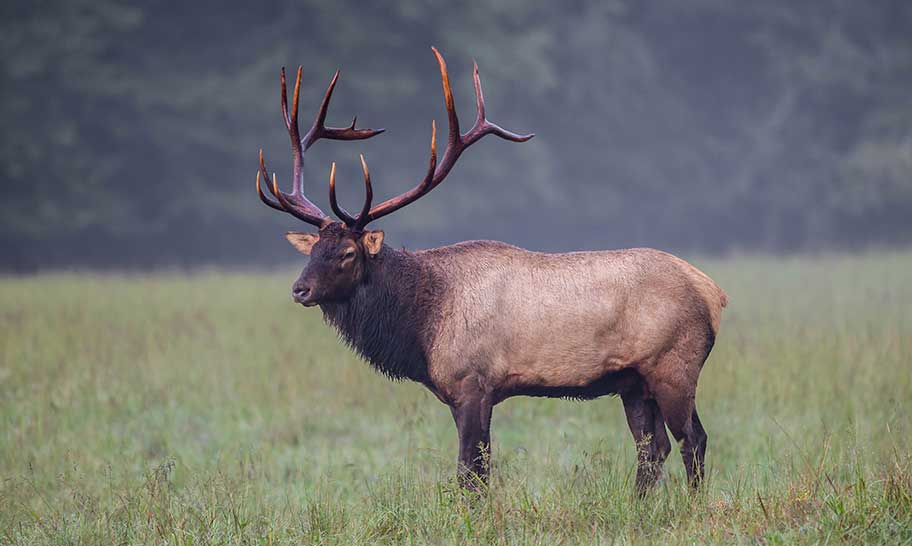Echoes of the Past: The Return of Elk to Cataloochee Valley and Western North Carolina
Nestled deep within the Great Smoky Mountains National Park, Cataloochee Valley is a serene and majestic landscape steeped in natural beauty and Appalachian history. But what many visitors may not know is that this tranquil valley plays a crucial role in one of the most inspiring wildlife conservation stories in the southeastern United States—the return of the elk.
A Ghost from the Past
Before European settlement, elk (Cervus canadensis) were native to North Carolina and much of the eastern United States. These large, majestic herbivores roamed the forests and valleys of the Appalachian Mountains in significant numbers. However, by the mid-1800s, overhunting and habitat destruction led to their complete extirpation from the region. For over 150 years, the eastern forests stood silent, devoid of the elk’s iconic bugle and thundering hooves.
“We headed home, our heads filled with visions of these majestic animals,” said a visitor after an elk viewing experience.
By the late 20th century, efforts to restore native species and biodiversity became a priority in conservation circles. The National Park Service, in collaboration with conservation groups and local communities, began to seriously consider reintroducing elk to the Smokies. After years of feasibility studies, planning, and public input, Cataloochee Valley was selected as the ideal reintroduction site due to its remote location, rich vegetation, and minimal human development.

An elk bugling.

Elk during mating season.
The Return: 2001 and 2002 Releases
In 2001, the dream became reality. A small group of 25 elk, brought in from Kentucky and Alberta, Canada, were released into Cataloochee Valley. Another 27 followed in 2002. The releases marked the beginning of an experimental project, designed to assess whether a self-sustaining elk population could thrive in the park’s ecosystem. Initial years were challenging—dealing with disease concerns, predation (particularly from black bears on young calves), and human interaction. However, the herd adapted. Over time, the elk began to flourish, with calves being born and survival rates improving.
Elk Today in the Smokies
Today, the Cataloochee elk herd has grown and spread beyond the valley. Visitors can often spot them grazing in open meadows at dawn or dusk, particularly in fall when the bulls are in rut and their bugling echoes through the mountains. What started as a small experiment has now become a celebrated success story in wildlife restoration.
These elk have also become local celebrities, boosting ecotourism in Western North Carolina. Communities like Maggie Valley and Waynesville have embraced the elk, integrating them into local culture and identity.
Challenges and Stewardship
Despite their success, the future of elk in Western North Carolina isn’t without challenges. Vehicle collisions, human encroachment, and habitat fragmentation pose ongoing threats. Education and responsible tourism are critical to ensuring that humans and elk can coexist peacefully.
The National Park Service continues to monitor the herd closely, working to balance conservation with visitor access and safety. There are also discussions about extending the elk’s range and maintaining genetic diversity within the population.
A Legacy Reclaimed
The return of elk to Cataloochee Valley is more than a story of wildlife management—it’s a testament to what’s possible when vision, science, and public support come together. These magnificent animals are once again a living thread in the fabric of the Smokies, a reminder of what was lost and a hopeful symbol of restoration.
If you ever find yourself in the misty folds of Cataloochee, stand still for a moment. You might hear the haunting call of a bull elk in the distance—an echo of a past reborn.



Leave a Reply